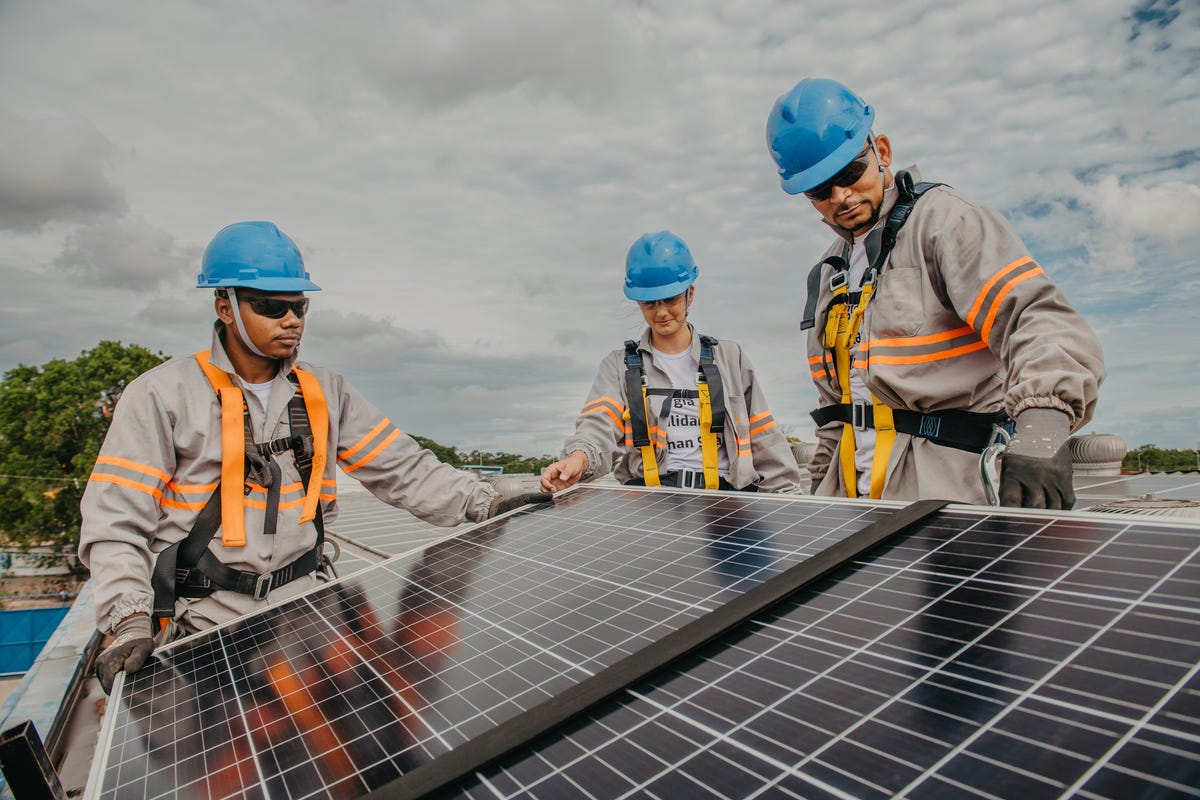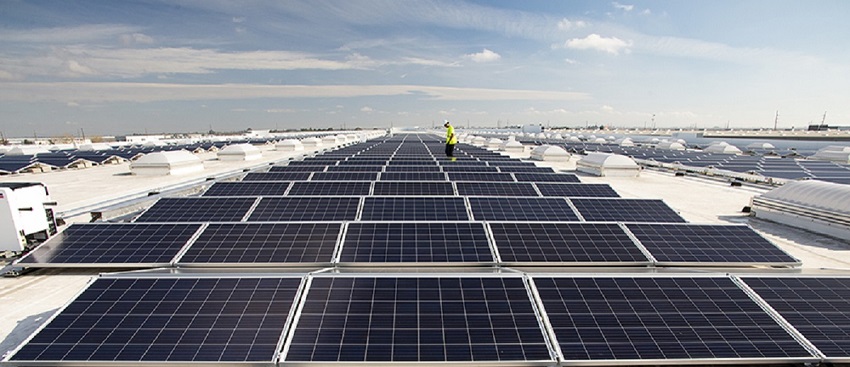Solar Energy Solutions Virginia: Lumina Solar Focuses On Offering Advanced Photovoltaic Solutions For Residences And Businesses
History and Founding
Have you ever questioned how a solar panel company springs from a simple spark of motivation into a powerhouse of sustainable energy? It often starts with a vision-- one fueled by a blend of innovation, determination, and a pinch of serendipity. The journey of lots of solar business mirrors the evolution of the technology itself: from large, ineffective panels to sleek, high-efficiency marvels harnessing the sun's bounty.
The Early Days
In the late 20th century, when solar power was still a specific niche concept, pioneers planted seeds for what would end up being a worldwide motion. Picture a little workshop filled with curious engineers, tirelessly exploring with solar batteries. Their passion was palpable, typically driven by a desire to combat climate modification and minimize reliance on nonrenewable fuel sources.
One such anecdote has to do with a founder who, inspired by an outdoor camping trip, recognized that even in remote areas, the sun might power important devices. This simple observation stimulated a business's objective to democratize access to clean energy.
Establishing Concepts

- Development: Constantly pressing the limits of solar technology to enhance performance and sturdiness.
- Sustainability: Committing to environment-friendly production and reducing carbon footprints.
- Accessibility: Making eco-friendly energy services affordable and useful for daily users.
Milestones in Growth
| Year | Key Occasion |
|---|---|
| 1985 | Business founded in a little garage, focusing on research study and advancement. |
| 1995 | Very first commercial photovoltaic panel item introduced, acquiring local attention. |
| 2005 | Broadened to worldwide markets, accepting international renewable resource goals. |
| 2015 | Introduced innovative photovoltaic panel innovation with improved energy conversion. |
Isn't it interesting how these incremental actions, typically neglected, form the energy landscape today? The solar panel business story is not almost innovation; it has to do with a relentless quest for a brighter, cleaner future.

Innovations in Photovoltaic Panel Technologies
Ever discovered how some photovoltaic panels shine brighter and last longer? It's not magic; it's the science of photovoltaic performance. Modern photovoltaic panel business invest greatly in technologies like bifacial cells, which catch sunlight from both sides, increasing energy harvest without broadening roof area. Have you ever wondered why some panels carry out better on cloudy days? That's due to advances in thin-film solar innovation, which thrives under diffused light conditions.
Product Variations Customized to Unique Needs
One size never fits all. Photovoltaic panel companies now provide:
- Monocrystalline panels for optimum effectiveness and smooth looks, suitable for space-constrained roofs.
- Polycrystalline panels, which use an economical option without sacrificing too much output.
- Building-integrated photovoltaics (BIPV), merging solar tech seamlessly into architectural aspects like windows and facades.
Selecting the best product isn't just about in advance cost; it has to do with matching your environment, energy objectives, and long-term savings. Homes shaded by trees need panels that excel in low-light scenarios, something many overlook up until energy costs climb unexpectedly.
Technical Tips for Optimal Selection
- Evaluate the temperature level coefficient-- lower worths mean panels lose less effectiveness on hot days.
- Look for panels with improved anti-reflective coverings to make the most of light absorption.
- Consider the panel's warranty not simply for problems, however for ensured power output over years.
- Do not ignore the value of the inverter innovation coupled with the panels; it can make or break your system's performance.
Beyond Panels: Emerging Patterns
Envision solar panels that change their angle instantly to chase after the sun-- tracking systems are ending up being more available, increasing yield considerably. Or solar tiles that mix invisibly into your roofline, changing your home into a quiet, self-dependent power generator. These innovations are reshaping what a solar panel company provides-- not simply products, however incorporated energy solutions.
Market Existence and Global Operations
Ever question why some photovoltaic panel companies seem to sprout up in every click here corner of the globe while others hardly make a ripple? The difference lies not simply in innovation but in mastering the art of browsing varied markets. Broadening globally resembles planting seeds in different climates-- you should understand each environment's distinct conditions to prosper.
Take, for instance, the intricate dance of logistics and supply chain management. Delivering panels halfway throughout the world isn't simply about range; it's about timing, custom-mades, tariffs, and adapting to local demand fluctuations. A company with robust worldwide operations expects these variables, ensuring panels arrive on schedule without pumping up costs. This insight is no little feat and typically separates market leaders from fans.
Secret Methods for Expanding Market Presence
- Localized manufacturing: Establishing production hubs near target audience lowers shipping delays and import intricacies.
- Strategic collaborations: Collaborating with regional companies speeds up market penetration and builds trust.
- Adaptive item style: Customizing photovoltaic panel tech to weather, sun strength, and infrastructure subtleties improves efficiency and approval.
What about the human factor? Solar panel business operating globally must reconcile cultural distinctions and regulative subtleties without forgeting their core mission. What works in a sun-drenched desert might fail in a damp coastal area. In some cases, the most innovative option is merely listening-- absorbing local insights to improve innovation and approach.
Specialists typically recommend a phased rollout rather than a shotgun growth. Why risk overextension when measured development builds sustainable momentum? Scaling sensibly implies balancing ambition with operational durability - Solar Panel Installation Virginia. In the race for sustainable energy supremacy, perseverance can be as important as speed.
Ecological Effect and Sustainability Practices
When photovoltaic panels initially emerged, lots of assumed they brought absolutely no environmental baggage. The reality is more nuanced. The production of solar batteries involves uncommon earth metals and energy-intensive procedures, which can leave a large carbon footprint before the panels even reach roofs. Yet, the true environmental expense depends greatly on the sustainability practices used by the solar panel company throughout the lifecycle of their products.
How often do we pause to consider what occurs to solar panels at the end of their beneficial life? Unlike batteries or electronics, photovoltaic panels can last 25-30 years, however disposal and recycling pathways stay underdeveloped in many areas. A company devoted to reducing environmental damage will have a robust strategy for recycling photovoltaic products, restoring valuable silicon, glass, and metals to avoid landfill build-up.
Key Sustainability Strategies
- Utilizing low-impact manufacturing techniques that reduce water and energy consumption.
- Executing closed-loop systems to recycle production waste back into brand-new panels.
- Engaging in transparent supply chain audits to make sure ethical sourcing of raw materials.
- Designing panels for simpler disassembly to help future recycling efforts.
It deserves keeping in mind that some solar companies have actually originated ingenious techniques, such as incorporating eco-friendly components or using less harmful chemicals during fabrication. This not just reduces environmental strain however also sets a precedent for the market. The concern stays: can the solar industry genuinely pivot towards a circular economy design without compromising effectiveness or price?
Specialist Tips for Evaluating Sustainability
- Ask about the business's dedication to carbon-neutral production and whether they balance out emissions.
- Investigate if they partner with certified recycling centers committed to solar panel waste.
- Try to find openness reports detailing environmental impacts and sustainability objectives.
- Consider the durability and guarantee of panels as an indirect step of resource efficiency.
In the end, going with solar power should indicate more than just slashing electricity expenses; it's about supporting a future where energy is harvested responsibly and waste is thoughtfully managed. Solar panel companies that embrace this approach not just light up homes but also cast a brighter light on sustainable development.